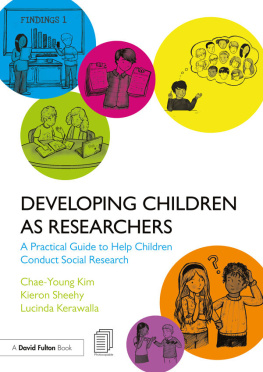CHILDREN OF POVERTY
STUDIES ON THE EFFECTS OF SINGLE PARENTHOOD, THE FEMINIZATION OF POVERTY, AND HOMELESSNESS
edited by
STUART BRUCHEY
UNIVERSITY OF MAINE
CHILD SUPPORT AND THE EDUCATIONAL ATTAINMENT OF YOUNG ADULTS
CHANGES IN THE 1980s
PEDRO M. HERNANDEZ
First published 1997 by Garland Publishing, Inc.
Published 2019 by Routledge
2 Park Square, Milton Park, Abingdon, Oxon OX14 4RN
605 Third Avenue, New York, NY 10017
First issued in paperback 2021
Routledge is an imprint of the Taylor & Francis Group, an informa business
Copyright 1997 Pedro M. Hernandez
All rights reserved. No part of this book may be reprinted or reproduced or utilised in any form or by any electronic, mechanical, or other means, now known or hereafter invented, including photocopying and recording, or in any information storage or retrieval system, without permission in writing from the publishers.
Notice:
Product or corporate names may be trademarks or registered trademarks, and are used only for identification and explanation without intent to infringe.
Publishers Note
The publisher has gone to great lengths to ensure the quality of this reprint but points out that some imperfections in the original copies may be apparent.
Library of Congress Cataloging-in-Publication Data
Hernandez, Pedro M., 1961
Child support and the educational attainment of young adults : changes in the 1980s / Pedro M. Hernandez.
p.cm. (Children of poverty)
Includes bibliographical references and index.
ISBN 0-8153-3002-2 (alk. paper)
1. Child supportUnited States. 2. Children of divorced parentsEducationUnited States. 3. Home and schoolUnited States. 4. Educational achievementUnited States. 5. Fatherless familyUnited States. I. Title. II. Series.
HV741.H475 1997
ISBN 13: 978-1-138-99121-7 (pbk)
ISBN 13: 978-0-8153-3002-8 (hbk)
ISBN 13: 978-1-315-79039-8 (ebk)
DOI: 10.4324/9781315790398
for my wife Arlene Torres
and our children Giselle and Pedrito,
with lots of love
Contents
This book examines the effects of child support payments on the educational attainment of young adults in the United States during the 1980s. This study uses the human capital and household production models to examine the effect of child support income and other family income on the educational attainment of children. Investments in childrens human capital are made with inputs of time and market goods and services. The focus of this book is on schooling as an investment in childrens human capital. Family structure influences that investment simply because it affects the availability of inputs. For children in female-headed families, the availability of those inputs are usually lower than for children in (intact) two-parent families. Child support income may reduce this difference in availability of inputs between family types.
Within the household production theory, childrens educational attainment is treated as a commodity that enters the household utility function. This commodity is produced with inputs of parental time and market goods and services. As with the human capital approach, female-headed families have fewer inputs available. Child support payments not only affect the childrens human capital and household production directly as a form of income, but also can affect the parental time input positively. We speculate that it is this relationship that accounts for the strong effect of child support income on educational attainment.
Although there have been studies that have examined the relationship between child support and educational attainment of children, these studies have some significant limitations. Most of these studies considered only cross-sectional data (i.e., only one year), which does not allow for examining the effects of enforcement and the increase in expenditure in the child support system over time. Another limitation of previous studies is that they have not examined changes in the population of noncustodial fathers due to changes in child support enforcement laws and how these changes alter the effect of child support on childrens educational attainment.
The uniqueness of this study is that it uses three data sets (i.e., 1979, 1984, and 1988) to measure the effects of changes in child support enforcement legislation that occurred during the 1980s. We speculate that noncustodial fathers faced stricter enforcement at the end of the 1980s than at the beginning. This makes the 1980s a natural experiment to examine whether or not the unobservable characteristics of the noncustodial fathers are the cause of higher educational attainment of their children. This is important because child support payments not only have a direct effect as a form of income, but also represent, in part, the father and child relationship that could be beneficial to the educational attainment of the child. However, once unwilling child support payers were brought into the child support system by stricter enforcement, the total effect of child support payments on educational attainment should decrease. Thus, the total effect of child support payments at the end of the 1980s should be lower than at the beginning.
This book may be a useful resource for researchers in a variety of disciplines who are interested in examining the effect of different legislative actions on the well-being of children. In addition, this study may be used as a supplemental reading in a number of academic settings, such as economics, sociology, and public policy. In economics and sociology, this book is probably best suited for either an advanced undergraduate or a graduate level course in family economics or the sociology of the family, respectively. In a public policy course this book may be a useful supplement in undergraduate or graduate level courses on poverty.
, there is discussion about sample selection bias which requires some knowledge of econometrics (or statistics). However, even if a reader decides to skip the technical discussion on the sample selection bias issue, he/she could still get a full understanding of this problem.
This book evolved from my doctoral dissertation completed at the University of Illinois at Urbana-Champaign. This advanced degree was not only the hard work of myself, but a combined effort. I would like to express my sincere appreciation to my advisor, Professor Andrea H. Beller, and members of my graduate committee, John W. Graham, Karen F. Folk, Jeffrey S. Gray, and Tim F. Liao, for their guidance in my graduate program; invaluable assistance in conducting this research; and their advice, reading, and correction of the thesis manuscript.
I would also like to thank Sara S. McLanahan and the faculty and staff of the Office of Population Research (OPR) at Princeton University. During my time as a post-doctoral fellow, the faculty and staff at OPR were very helpful in making suggestions for revisions on my dissertation. I would like to thank especially, Thomas Hanson, for his help with the instrumental variable technique.










